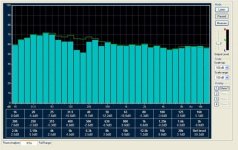Measurements are an important part of any scientific or engineering-based product design and development, but with respect to audio products, they tell part, but not all, of the story.
With respect to a loudspeaker for example, in-room frequency response is important as well as spectral decay. IMHO, spectral decay is particularly important as it will depict how the drivers behave and/or interact with the cabinet design and materials.
But there's aspects of experiencing music when we we listen to recordings that measurements, IMHO, can't convey. Some of these attributes are spatiality, imaging, soundstage, and most notably, IMHO, qualities and distinctions of tonality and timbre.
Haven't seen a measurement yet that accurately conveys why a Guaneri violin sounds different than a Stradivarius when playing the same exact piece of music by the same musician. This is a distinction of instrumental timbre, and I've yet to see a test instrument capture these qualities and attributes.
Oh, the whole, In my view, it's important to remember that our perception of music is a construct of the brain, and not simply a THD or IMD graph on a spectrum analyzer.
Lastly, I'll just end with a Stoic philosophical perspective that I strive to live by: "The tranquility that comes when you stop caring what they say. Or think. Or do. Only what you do." – Marcus Aurelius
Cheers.

